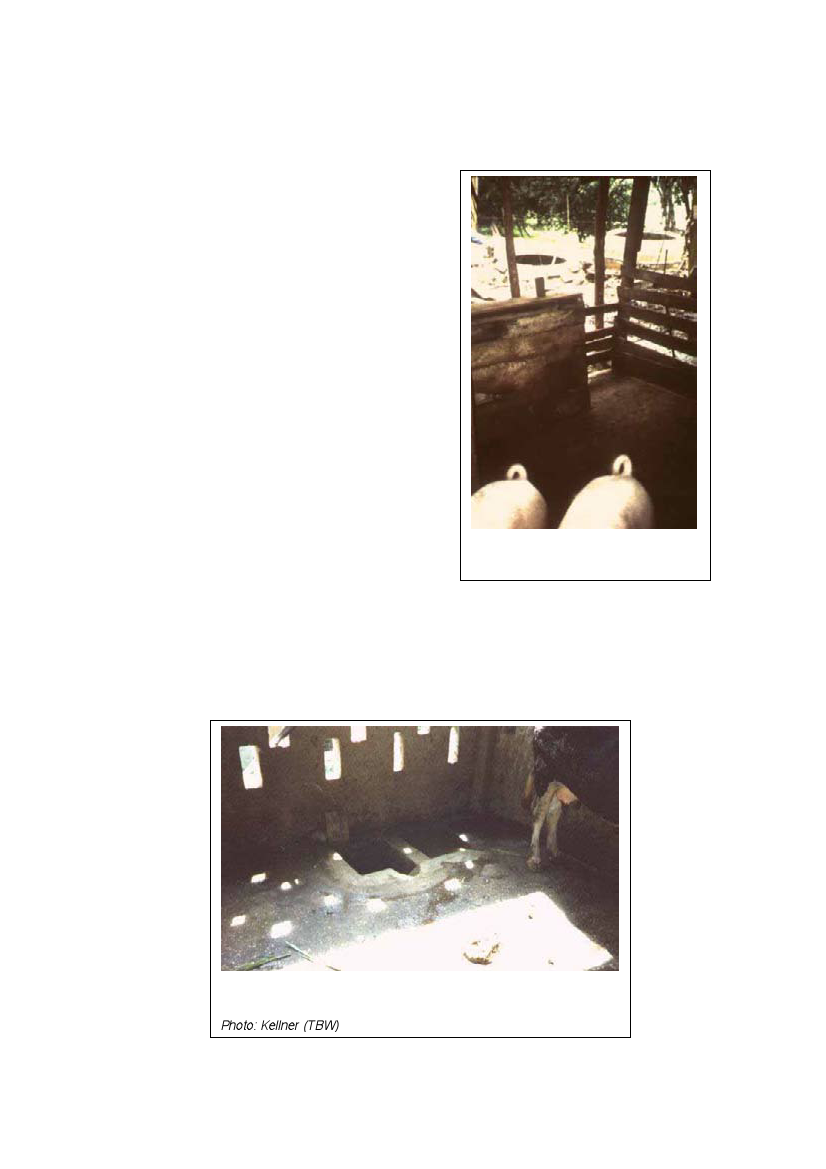
Siting of the Biogas Unit
Stable
• The stable should be built on an
elevated position. This makes it
possible to use gravity to collect urine
and dung for feeding into the biogas
plant. An elevated site on the farm also
facilitates the distribution of slurry by
gravity onto the farm land.
• For security reasons, the stable often
is situated near the house.
• For easy access the feeding trough
should be directed towards the area
where fodder is grown.
• The milking place has to be at the
higher end of the sloping stable floor.
The milking should take place under
clean conditions, away from the dung
alley.
• roofed. If it is totally roofed, sun should
still enter and ventilation should be
assured.
• The position of the stable should allow
for later extension.
• The animals need constant access to
clean and fresh water and feeds.
• If the present position of the stable is
unsuitable as a place for the biogas
unit, it is usually better to shift the
stable to the optimal position on the
farm.
Figure 22: A digester should be as
close as possible to the source of
dung.
Figure 23: Cowshed, directly connected to the plant: A urine
chamber to the right collects the liquid which can be used to wash
the dung into the digester.
Photo: Kellner (TBW)
41